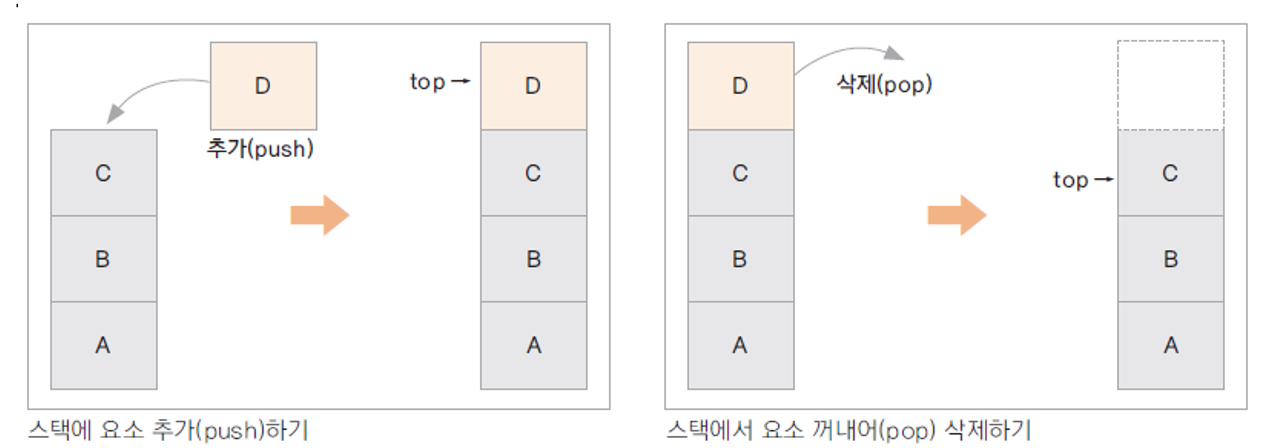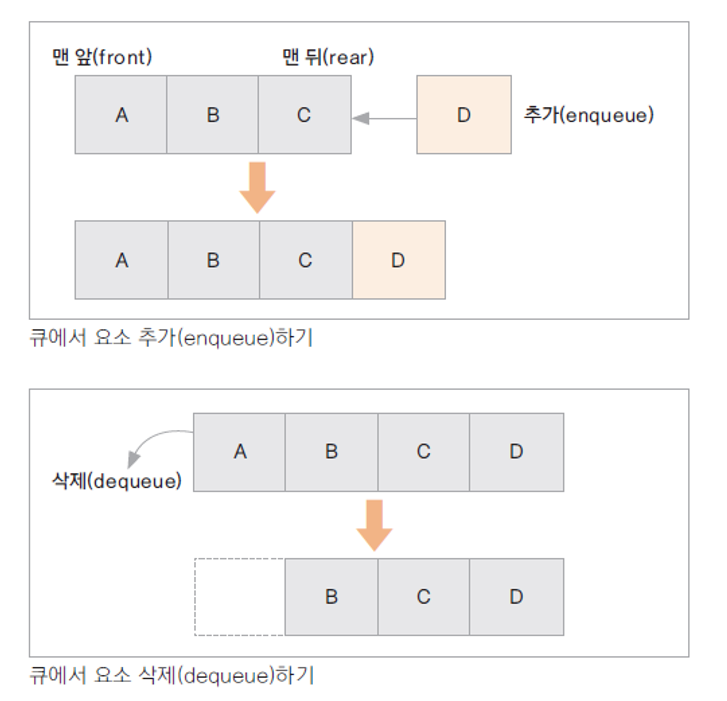Java(42) - Stack & Queue
이번 포스트에서는 Stack과 Queue를 구현하는 법을 알아보겠습니다.
1. Stack 구현하기
스택은 Last In First Out(LIFO), 즉 후입 선출의 구조를 지닙니다.
(맨 마지막에 추가된 요소가 가장 먼저 꺼내지는 구조)
이미 구현된 클래스가 제공되지만, ArrayList나 LinkedList로도 구현이 가능합니다.

2. Queue 구현하기
큐는 First In First Out(FIFO), 즉 선입 선출의 구조를 지닙니다.
(먼저 저장된 자료가 먼저 꺼내지는 구조)
보통 선착순, 대기열 구현시 사용하며,
ArrayList나 LinkedList로 구현할 수 있습니다.

3. 예시
Stack
(ArrayList로 구현)
import java.util.ArrayList;
class MyStack {
private ArrayList<String> arrayStack = new ArrayList<String>();
public void push(String data) {
arrayStack.add(data);
}
public String pop() {
int len = arrayStack.size();
if(len == 0) {
System.out.println("스택이 비었습니다.");
return null;
}
return arrayStack.remove(len-1);
}
}
public class StackTest{
public static void main(String[] args) {
MyStack stack = new MyStack();
stack.push("A");
stack.push("B");
stack.push("C");
System.out.println(stack.pop());
System.out.println(stack.pop());
System.out.println(stack.pop());
System.out.println(stack.pop());
}
}
댓글남기기